Household heroes
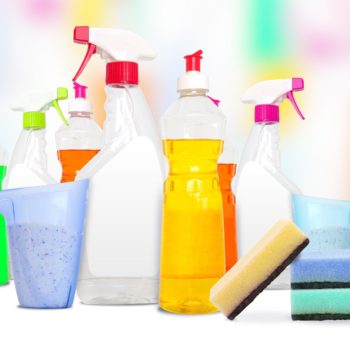
While private-label ranges and promotions have largely driven volume sales within the household category in recent years, innovative brands which can offer consumers added ease and superior results are vital when it comes to generating value sales, writes Gillian Hamill
17 August 2016
Globally, bleaches and disinfectants increased their market share at the expense of washroom cleaners a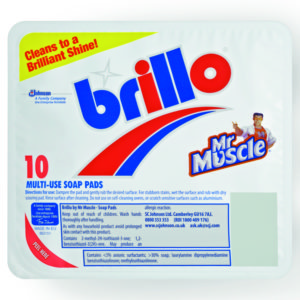 nd specialist cleaners and polishes, market analyst Mintel reports. Consumers’ fears over viruses such as influenza helped drive sales of antibacterial cleaning solutions in 2015. Meanwhile, ma
nd specialist cleaners and polishes, market analyst Mintel reports. Consumers’ fears over viruses such as influenza helped drive sales of antibacterial cleaning solutions in 2015. Meanwhile, ma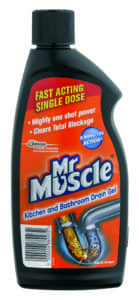 rketers’ efforts to educate consumers about germ hotspots created new usage occasions.
rketers’ efforts to educate consumers about germ hotspots created new usage occasions.
Gleaming results!
Showing the frequency of purchase for household products, SC Johnson reports Nielsen data for the UK shows 91% of 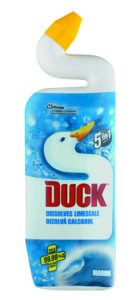
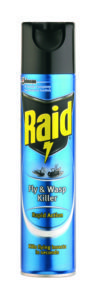 household cleaning products are bought at least once a month. What’s more, 84% of toilet cleaner purchases are part of planned trips into store. The research also reveals toilet cleaners are a highly efficient purchased category with 89% shopper conversion rate at shelf. This conversation rate is certainly not to be sniffed at, considering toilet cleaner is the most visited segment of the cleaner category in-store (41%).
household cleaning products are bought at least once a month. What’s more, 84% of toilet cleaner purchases are part of planned trips into store. The research also reveals toilet cleaners are a highly efficient purchased category with 89% shopper conversion rate at shelf. This conversation rate is certainly not to be sniffed at, considering toilet cleaner is the most visited segment of the cleaner category in-store (41%).
Not surprising considering toilet cleaners are a household staple, and a loyalty builder for a store if choice is available. The toilet cleaner aisle is easy to locate with strong visual cues of which the Duck bottle’s iconic neck is one of them. This is important, as in terms of the shopper decision order at 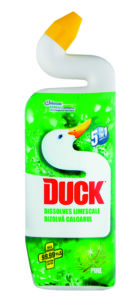 shelf, shoppers first search for the brand they know and Duck is seen as a household staple.
shelf, shoppers first search for the brand they know and Duck is seen as a household staple.
Bleach is the biggest segment in toilet, followed by liquid cleaners and rimblocks, Nielsen data sho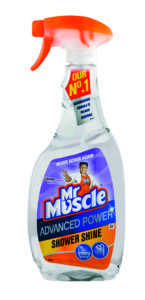 ws. Impressively, Duck is the third biggest brand within toilet cleaners.* Within li
ws. Impressively, Duck is the third biggest brand within toilet cleaners.* Within li quid cleaners, Duck is the number two brand** and is out-performing the market in value and units (growth in value + 3.8% and units growth at +5.8%). Duck is also the number one brand in rimblocks** and the number one brand in cageless rimblocks**
quid cleaners, Duck is the number two brand** and is out-performing the market in value and units (growth in value + 3.8% and units growth at +5.8%). Duck is also the number one brand in rimblocks** and the number one brand in cageless rimblocks**
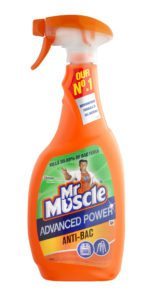 *(Source: Total Market MAT Value Sales, Nielsen Scantrack w/e 02/07/2016, Excl. Private Label)
*(Source: Total Market MAT Value Sales, Nielsen Scantrack w/e 02/07/2016, Excl. Private Label)
**(Source: Total Market Value Sales MAT 2016 Nielsen Scantrack w/e 02/07/2016)
(All Nielsen numbers are for the UK)
Sales foaming up!
Bloo, a leading bathroom care brand, is back on TV screens across the UK and Ireland between July and October promoting FoamAroma, its newest product offering.
The 20 second advert was first aired from 11 July in a media campaign worth over £1.25 million, reaching over 70% of UK and Ireland households.
Bloo FoamAroma is available in two variants, Rose and Apple Blossom and Ocean Mist, and foams and fragrances when dispensed into the loo bowl, giving consumers a new and easy way to freshen up their loos.
Unlike other cleaning products for the loo or air fresheners, Bloo FoamAroma foams on contact with the water, rising up the loo bowl and releasing its perfume. This allows it to tackle odours at source, making it a true innovation in the bathroom care category. It also leaves the loo bowl sparkling clean and helps to prevent limescale.
Bloo FoamAroma comes in 500g contoured bottles, each featuring an easy-to-use 50g measuring cap. The packaging has been designed with premium style trends in mind and can thus be left out on display to accessorise the bathroom.
Melanie Billows, marketing controller for Bloo, said: “We’re incredibly excited about our new TV advertising campaign to promote the new FoamAroma range, which has proven to be a real hit with consumers. We are delighted that our investment in developing this product has been welcomed by households and we are now working on extending the range further.”
Smart route to superior cleaning
Two new specialist indoor cleaning products have been launched by Jeyes, and have already secured a major listing by Morrisons in the UK.
Jeyes Smart Brush Mould and Mildew Remover and Jeyes Smart Brush Limescale Remover took their place on the shelves from 18 July 2016. They joined Jeyes Barbecue Cleaner and the original Jeyes Fluid, which this year celebrates its 140th anniversary.
Particularly useful in the kitchen and bathroom, the new Jeyes Smart Brush range delivers superior removal of invasive mould, mildew and limescale due to the combined actions of the powerful, specialist gel formulas and a unique rigid angled brush. The Smart Brush range is designed to give a fast and effective finish, helping users get to hard-to-reach places such as around taps and inside your shower cubicles and make light work of tough, specialist cleaning jobs.
The future of laundry
With latest estimates showing that upwards of 80% of detergent is now sold on deal, Unilever examines how stores, retailers and manufacturers can drive value sales within the laundry category
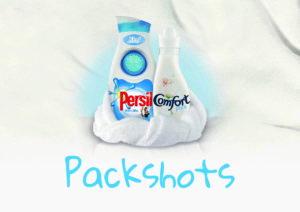 The landscape of the laundry market from a consumer and retail perspective has shifted profoundly in the last five to ten years. Whereas in days gone by, powder detergent was king and the innovation of ready dosed powder tablets was the format rising in popularity with consumers, today there has been a definitive move by consumers toward liquid detergent, now accounting for upwards of 33%* of sales depending on the channel (liquid, liquid concentrate and semi concentrate), and actually surpassing powder sales in multiples retailers. On top of this, defined dosage ‘liquid capsules’ or ‘pods’ are the newest addition to the category and have cut themselves a considerable slice of the pie and show no sign of stopping having reached upwards of 25% of sales* and growing faster than the other formats.
The landscape of the laundry market from a consumer and retail perspective has shifted profoundly in the last five to ten years. Whereas in days gone by, powder detergent was king and the innovation of ready dosed powder tablets was the format rising in popularity with consumers, today there has been a definitive move by consumers toward liquid detergent, now accounting for upwards of 33%* of sales depending on the channel (liquid, liquid concentrate and semi concentrate), and actually surpassing powder sales in multiples retailers. On top of this, defined dosage ‘liquid capsules’ or ‘pods’ are the newest addition to the category and have cut themselves a considerable slice of the pie and show no sign of stopping having reached upwards of 25% of sales* and growing faster than the other formats.
However, from a retail perspective, probably the most noticeable shift has been the commoditisation of the category and huge promotional dependence. Latest estimates tell us that upwards of 80% of detergent is now sold on deal, and more consumers than ever now don’t even bother going down the aisle, preferring instead to buy whatever format or brand is being sold on the promotional ends. The downside of this promo end shopping, is the detriment of impulse homecare purchases and in particular declining penetration into complimentary categories such as fabric conditioner, ancillaries and some household cleaning categories (upwards of 15% of these categories is sold in the same basket as main wash detergent). **
On top of this, stores will have noticed that much of the growth they may be experiencing will have been driven by the advent of the extra large pack format, at increasingly low prices.
So, is there any hope? Definitely. However it requires a mind-set shift away from pursuing growth driven by volume, to prioritising adding value back into the category.
There will be sceptics who say that this isn’t actually possible; however to talk these people down we need look no further than the ‘pure’ or sensitive skin laundry segment. Despite mass consumer behaviour suggesting that loyalty and willingness to pay are at an all-time low, consumers have actually proven they are willing to pay a premium for certain products and product characteristics. Sensitive skin consumers continue to purchase more product on base price than any other segments in laundry*. Furthermore families with new-borns increase spend on laundry significantly**.
How then can we as stores, retailers and manufacturers add value at a practical and operational level?
Three steps:
- Stem the erosion of “cost per wash”: The term cost per wash currently doesn’t mean much to anyone, but it should. Currently the average cost per wash is 26c* (i.e. a 10 wash pack would be €2.60). For every -1% this decreases, you must sell +1% washes more washes to break even. Readers will not be surprised to find out that the average cost per wash has fallen across all formats over the last number of years. Worse still is the fact that this creates a virtuous circle. “My CPW has fallen -5%, so I must sell +5% more washes. How do I do that? I’ll give consumers the best deal ever. Oh no, that’s reduced my CPW even further, I’ll need an even better deal now”. STOP.
In the words of some guy called Einstein, “the definition of insanity is doing the same thing and expecting different results”. Break the cycle and concentrate on how to increase cost per wash instead. How? Answer: Reduce volume on deal and increase base sales through innovation, education and not putting everything on sale, all of the time.
- Innovate: Consumers are willing to pay more if they get more. The trick is effectively communicating the product benefits. Liquid capsules or pods have given us a perfect example that consumers are more than willing to pay a premium for a product if they can clearly understand the relative merits of it over other products (in this case convenience).
- Educate: As above, effective communication to consumers is the key. We cannot expect consumers to pay more for products when we give them absolutely no reason to. In a world where there is always something on promotion, in order to engender loyalty (to a brand or otherwise, i.e. segment or format etc.) we need to make it easy for consumers to be crystal clear on why they would forego a cheaper option.
Based on the current market growth trajectory the detergent category will have haemorrhaged -€11.7 million in sales value by 2020**. That’s assuming we can maintain our current levels of decline. Is the future for laundry bright… or dark? Or is it a colour load?
*(Source: AC Nielsen MAT week data to 19 June)
**Dunnhumby 52 week CC data to 19 June)
***(Kantar 52 week Fab Clean sales to 19 June)



 Print
Print
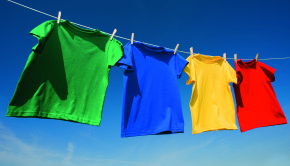


Fans 0
Followers